Mystery Fossil Archives#1–9 | #10–18 | #19–27 | #28–36 | #37–45 | #46–54 Click on the image for a closer look at each Mystery Fossil. Can you guess
them all correctly? |
|
#1—August, 2000 |
|
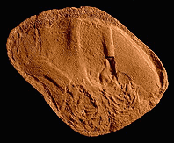 |
UCMP is very lucky to have this fossil (which is 300 million years old) in its collections! This type of organism is very rarely preserved in the fossil record. Its living descendants have suprisingly complex eyes, though they lack any sort of a centralized nervous system or brain. Yet these organisms can adeptly maneuver around things and sense potentially dangerous situtations with their eyes. When they do sense danger, they are remarkably quick in making an escape. |
#2—September, 2000 |
|
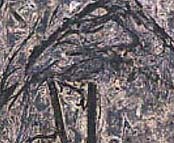 |
At about three meters tall, this organism from the Middle Devonian was among the tallest of its kind. Its living relatives may include ferns and horsetails. |
#3—October, 2000 |
|
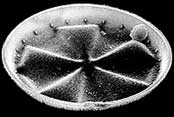 |
Though the first specimens of this group appeared in the Lower Cretaceous, they are most often found in rocks of Eocene and Miocene age. These handy fossils are used today in cleansers, paints, filtering agents, abrasives...and even toothpastes! But they're not extinct—in fact they are among the most important aquatic microorganisms living today. |
#4—November, 2000 |
|
 |
This month's Mystery Fossil hails from the Miocene age Monterey Formation of southern California. Their fossil record is rather sparse, as these organisms do not produce hard parts. |
#5—December, 2000 |
|
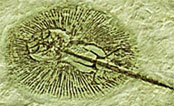 |
Do you suppose that this organism could be some sort of prehistoric roadkill, flattened as it is? No, this organism was arranged this way in life and its descendants still exist today. This specimen dates from the upper Cretaceous Period. What can it be? |
#6—January, 2001 |
|
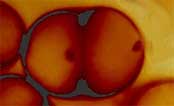 |
These may look like the shifty eyes of some cartoon character but they're not eyes at all. In fact, eyes had not yet evolved at the time these organisms lived, about one billion years ago. What do you think these can be? |
#7—February, 2001 |
|
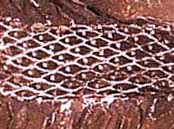 |
Modern descendants of this organism tend to be small, creeping forms, while our Mystery Fossil is known to have grown quite large (over 100 feet!). The fossil remains of this, and similar organisms, “fueled” the Industrial Revolution and are still an important energy source today. What can the Mystery Fossil be? |
#8—March, 2001 |
|
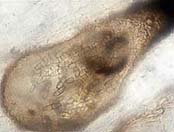 |
Fossils of this sort of organism are not rare but they receive little fanfare because (1) they tend to be microscopic and (2) they are often difficult or impossible to identify. This one, from the Miocene of Nevada, is particularly well preserved. Do you know what it is? |
#9—April, 2001 |
|
 |
Based on what we think we see in the fossil record, this type of organism has been around longer than any other—about 3.5 billion years! This particular specimen from northern Australia was found in rocks a mere one billion years old. Do you know what it is? |
|
#1–9 | #10–18 | #19–27 | #28–36 | #37–45 | #46–54 Home | What's new | About UCMP | History of life | Collections | Other resources |
|
| |
|